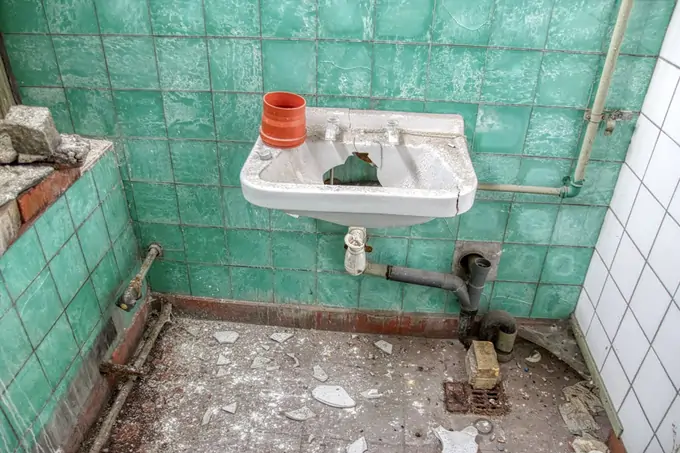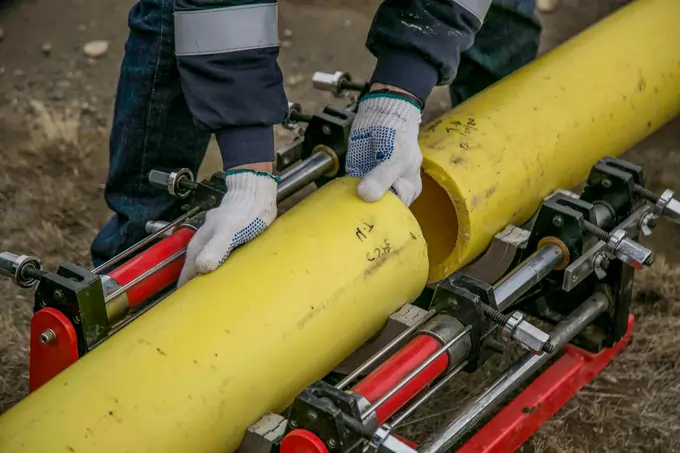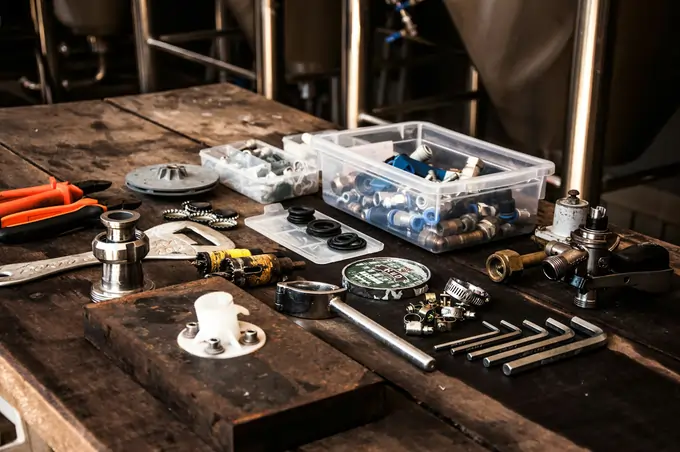Plumbing backflow is a critical issue that can affect the safety of your home’s water supply.
This comprehensive guide will help you understand what backflow is, why it matters, and how to prevent it. By the end of this article, you’ll be equipped with the knowledge to protect your family from potential water contamination.
But first, let’s dive into the basics of backflow and why it’s such a pressing concern for homeowners.
What is Backflow in Plumbing?
Backflow occurs when water flows in the opposite direction of its intended path in your plumbing system. This reversal can lead to contaminated water entering your clean water supply. Imagine drinking water tainted with sewage or chemicals – a nightmare scenario that backflow can cause.
But how does this happen, and why should you be concerned?
Let’s explore the common causes and learn how to identify a backflow event.
Common Causes of Backflow
Several factors can trigger backflow in your home’s plumbing:
- Sudden changes in water pressure can force water to flow backward.
- Faulty check valves may fail to prevent reverse flow.
- Cross-connections between potable and non-potable water lines pose a risk.
- Improperly installed plumbing fixtures can create pathways for backflow.
- Extreme weather events may disrupt normal water flow patterns.
Understanding these causes is crucial for preventing backflow in your home. But how can you tell if backflow is happening in your plumbing system?
How to Identify a Backflow?
Look out for these warning signs:
- Discolored or foul-smelling water coming from your taps.
- Unusual gurgling sounds in your pipes.
- Reduced water pressure throughout your home.
- Visible contamination in your toilet bowl or sink.
- Unexplained illnesses among family members.
If you notice any of these signs, it’s time to take action. But before we discuss prevention, let’s examine the different types of backflow you might encounter.
Types of Backflow
Backflow can occur in two main forms:
- Back-siphonage: Caused by negative pressure in the water supply.
- Back-pressure: Results from higher pressure in your plumbing system than in the main water supply.
Each type requires specific prevention methods, which we’ll explore next.
How Can You Prevent Backflow?

Preventing backflow is crucial for maintaining safe, clean water in your home.
Let’s look at three key strategies to keep your water system protected.
Installing a Backflow Preventer in Your Plumbing System
A backflow preventer is a device that stops water from flowing backward into your clean water supply. These devices are essential for any home connected to a public water system.
Different kinds of devices that stop water from flowing backward are: RPZ gadgets
- RPZ gadgets (Reduced Pressure Zone)
- Double check valves
- Pressure vacuum breakers?
Each type is suited for different plumbing scenarios. But installation is just the first step – regular maintenance is equally important.
Regular Maintenance Tips to Prevent Backflow
To keep your backflow prevention system working effectively:
- Schedule annual testing with a certified professional.
- Inspect visible parts of your plumbing system regularly for signs of wear.
- Keep outdoor hoses and sprinklers properly maintained.
- Address any plumbing issues promptly to prevent cross-connections.
- Educate your family about backflow risks and prevention.
Following these tips can significantly reduce your risk of backflow. But how do you choose the right backflow prevention device for your home?
Choosing the Right Backflow Prevention Device for Your Home
Selecting the appropriate device depends on several factors:
- The type of potential contamination risk
- Your home’s water pressure
- Local plumbing codes and regulations
- The specific plumbing fixtures in your home
Consult with a licensed plumber to determine the best option for your situation. Now that we’ve covered prevention, let’s explore why backflow prevention is so crucial.
Why is Backflow Prevention Important?
Backflow prevention is not just about comfort – it’s about protecting your health and safety. The consequences of backflow can be severe and far-reaching.
Let’s examine the risks and impacts of backflow on your home and community.
Risks of Water Contamination
Backflow can introduce harmful substances into your drinking water, including:
- Bacteria and viruses from sewage
- Chemical contaminants from industrial sources
- Pesticides and fertilizers from landscaping
- Heavy metals from plumbing materials
These contaminants can cause serious health issues, from mild illness to severe poisoning. But the risks extend beyond just your drinking water.
Impacts on Residential Plumbing Systems
Backflow can also damage your home’s plumbing infrastructure:
- Corrosion of pipes and fixtures
- Clogged drains and sewer lines
- Reduced efficiency of water heaters and appliances
- Increased wear on plumbing components
These issues can lead to costly repairs and decreased home value. So how does a backflow prevention system protect you from these risks?
The Role of Backflow Prevention Systems in Ensuring Safe Water

A properly installed and maintained backflow prevention system:
- Creates a physical barrier against contaminated water.
- Maintains proper water pressure throughout your plumbing system.
- Alerts you to potential issues before they become serious.
- Complies with local health and safety regulations.
- Provides peace of mind for you and your family.
Understanding the importance of backflow prevention is crucial. But to fully grasp the issue, we need to explore the different types of backflow in more detail.
What Are the Different Types of Backflow?
Backflow can occur in various ways, each with its own set of challenges.
Let’s break down the two main types and their potential impacts on your plumbing system.
Understanding Back-Siphonage and Its Effects
Back-siphonage occurs when negative pressure in the water supply causes a vacuum effect:
- It can draw contaminated water into your clean water lines.
- Common during water main breaks or firefighting operations.
- More likely in homes with older plumbing systems.
- Can affect entire neighborhoods if not addressed quickly.
Preventing back-siphonage requires specific devices and maintenance practices. But it’s not the only type of backflow you need to worry about.
Back-Pressure: Key Points to Know
Back-pressure backflow happens when the pressure in your plumbing exceeds the supply pressure:
- Often caused by booster pumps or elevated water tanks.
- Can force contaminated water back into the main supply.
- You see it more often in businesses and factories.
- Requires different prevention methods than back-siphonage.
Understanding these distinctions helps in choosing the right prevention strategy. But which parts of your plumbing system are most vulnerable to backflow?
Key Plumbing Fixtures Prone to Backflow
Certain fixtures in your home are more susceptible to backflow:
- Toilets with faulty fill valves
- Shower heads and handheld sprayers
- Outdoor hose bibbs and sprinkler systems
- Washing machines and dishwashers
- Boilers and water heaters
Paying extra attention to these fixtures can help prevent backflow issues. But when should you call in a professional to address backflow concerns?
When Should You Contact a Plumber for Backflow Issues?
Knowing when to seek professional help is crucial for maintaining a safe plumbing system.
Let’s explore the signs that indicate you need immediate assistance and the services available to address backflow concerns.
Signs That Indicate Immediate Professional Help
Contact a plumber if you notice:
- Sudden changes in water color, taste, or odor
- Unexplained drops in water pressure
- Gurgling or sucking sounds from drains
- Visible contamination in fixtures
- Failed backflow preventer tests
Don’t ignore these warning signs – they could indicate a serious problem. But what services can a plumber offer to address backflow issues?
Service Options for Addressing Backflow Concerns
Professional plumbers can provide:
- Comprehensive backflow testing and certification
- Installation of appropriate backflow prevention devices
- Repair or replacement of faulty backflow preventers
- Identification and correction of cross-connections
- Emergency response to backflow events
Choosing the right service depends on your specific situation and needs. Finally, let’s look at how you can maintain your plumbing system to prevent future issues.
Maintaining Your Plumbing System to Prevent Future Issues
Regular maintenance is key to preventing backflow:
- Schedule annual inspections of your backflow prevention devices.
- Keep outdoor fixtures and hoses properly maintained.
- Address leaks and plumbing issues promptly.
- Educate yourself about your home’s plumbing system.
- Consider upgrading older plumbing components.
By following these guidelines, you can significantly reduce your risk of backflow problems.
Summary
In conclusion, understanding and preventing backflow is essential for maintaining safe, clean water in your home. By recognizing the signs, implementing proper prevention measures, and seeking professional help when needed, you can protect your family from the risks of water contamination.
Remember, when it comes to backflow prevention, proactive measures are always better than reactive solutions. Don’t wait for a problem to occur – take action now to ensure your home’s water system remains safe and reliable.
FAQs
What is a backflow in plumbing?
Backflow in plumbing is when water flows opposite of the intended direction, mixing potable and contaminated water. This happens when there’s a cross-connection. For example, without an air gap in your faucet, dirty water can mix with clean water in your water distribution system.
Modern plumbing uses backflow prevention devices to ensure water flows in one direction only, keeping your drinking water safe. If you don’t have a backflow preventer installed, dirty wastewater could flow into your home, contaminating your water. Backpressure can lead to backflow.
How to fix plumbing backflow?
So, you’re dealing with plumbing backflow—no worries! Here’s the scoop: backflow can happen when there’s siphonage or back pressure, causing water and wastewater to mix. This mixture isn’t good because it leads to contamination of potable water, meaning the water you drink and use isn’t clean and safe.
To fix it, you need devices to prevent backflow protection. These include built-in backflow preventers and backflow assemblies that allow water to flow in one direction only. They help keep your main water line safe from contamination. Sometimes, you might need additional backflow protection depending on your setup.
How do you stop backflow in plumbing?
Do issues with backflow occur in your plumbing? Don’t worry, we’re here to help! It’s essential to prevent backflow in your pipes to keep contamination out of your public water supply. There are various types of backflow prevention methods, from check valves to air gap installations.
Our professional plumbing services cover all your needs. Schedule an appointment today, whether in your home or business and let’s keep that water flowing safely without issues due to backflow!
What happens if backflow occurs?
If backflow happens within the water system, it can mix clean and dirty water sources, making a mess. This can create a huge risk of contamination. Don’t freak out though; there are people available to help. Just contact the professionals, and they’ll fix it up.


